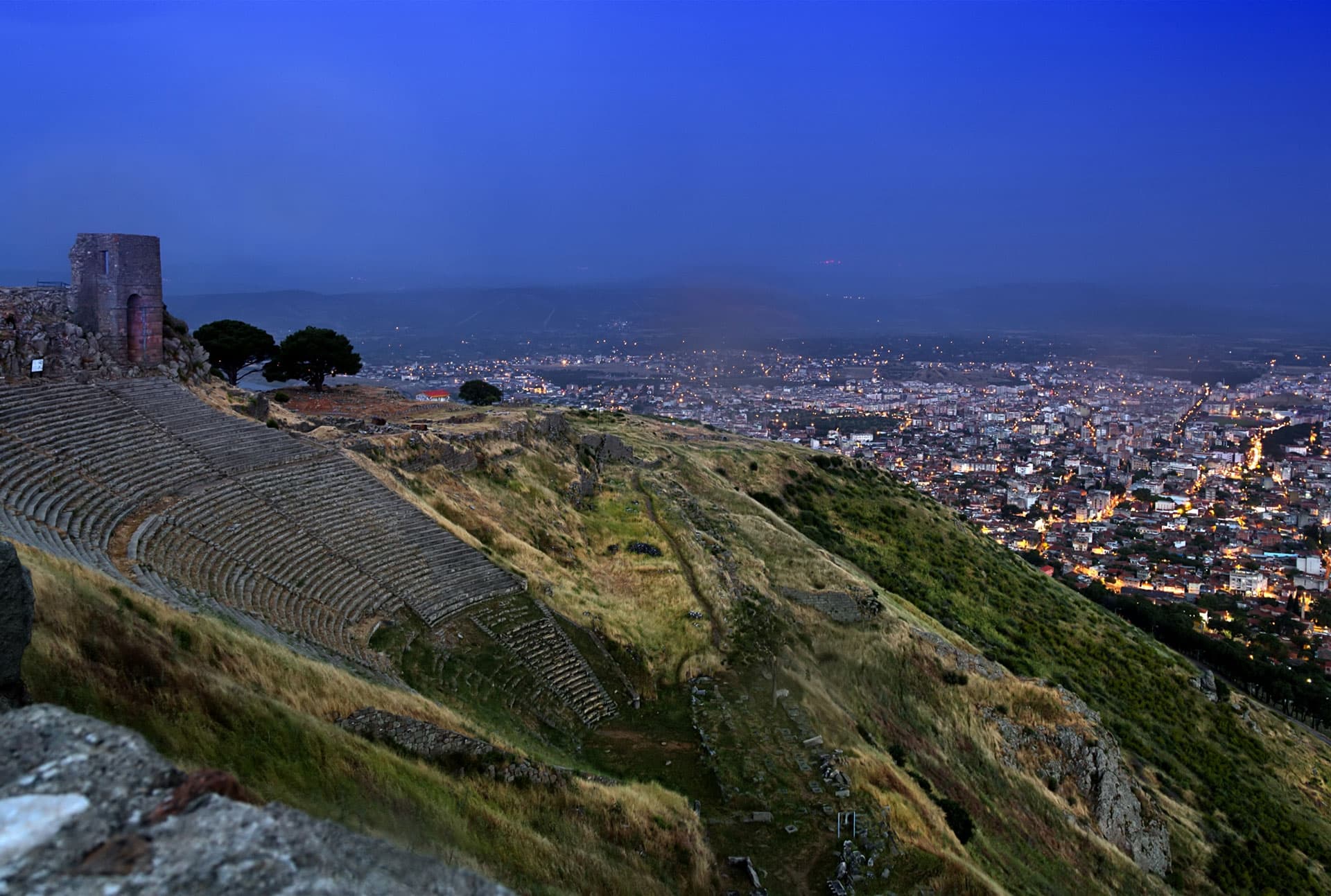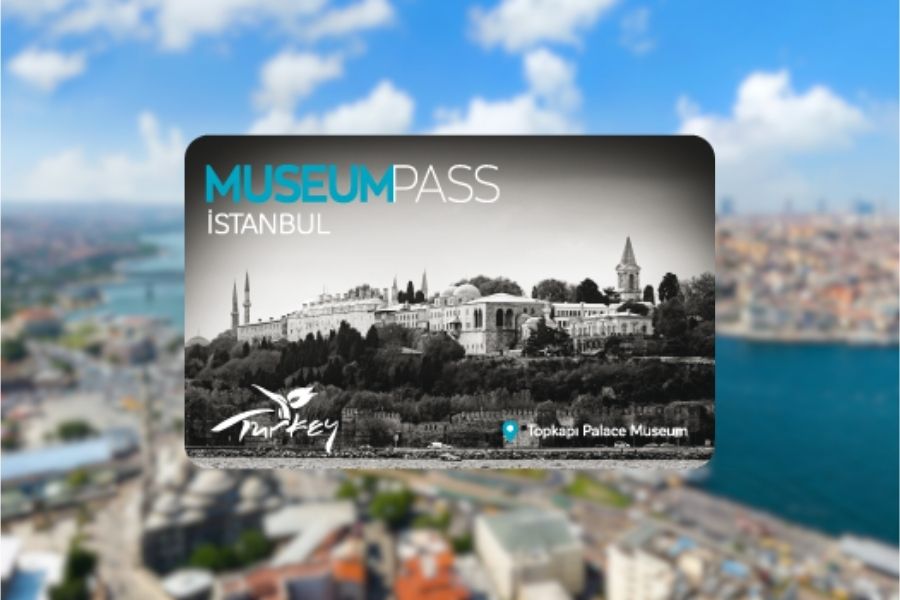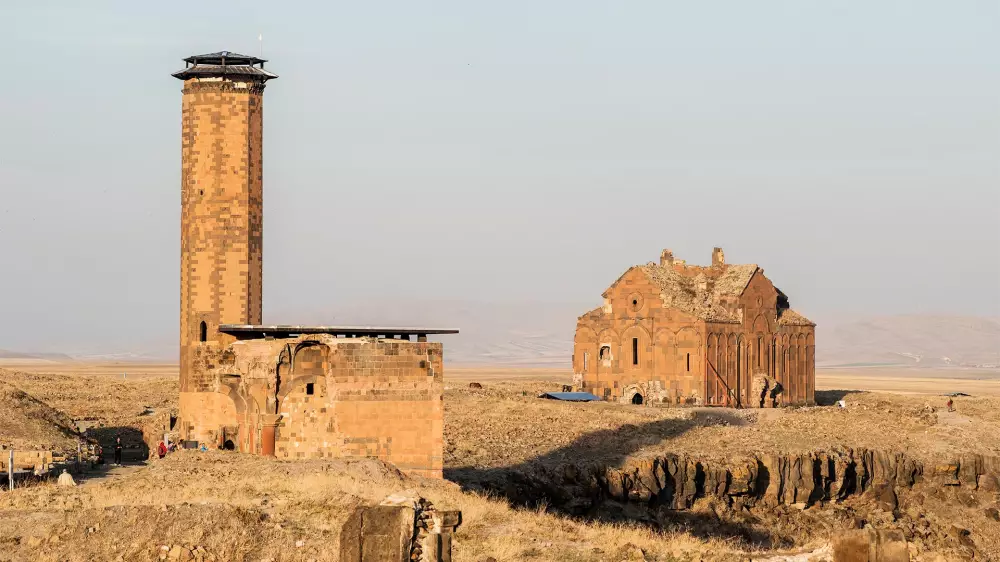
Pergamon Ancient City and Healing Center Asklepion
Table Of Contents
Bergama takes its current name from the ancient city of Pergamon, which it still hosts today. The name Bergama, which has survived to the present day with a slight change, is one of the rare places that has preserved its name from ancient times to the present. Along with Selçuk, another district of Izmir, it is one of the places where tourism activities are intense in Izmir. Neighboring the districts of Aliağa, Kınık and Dikili, Bergama is a place that must be visited with its historical and natural beauties and clean air. Although the economy of Bergama is mainly based on agriculture, it attracts attention with the historical texture it hosts in the city center and outside.
Pergamon, an ancient city that you will want to visit to its fullest, is a place where you can spend your whole day, so if you want to visit other historical places in the vicinity, you may consider staying one night. Enjoy your reading.
PERGAMON ANCIENT CITY
Pergamon ancient city is one of the important ancient cities in Anatolia, which has been on the UNESCO World Heritage List since 2014. It is also among the most researched archaeological sites in Turkey, with archaeological excavations continuing for 140 years. Pergamon, which literally means “protected castle”, is in a position worthy of its name.
It was established in the Bakırçay Valley, which is approximately 24 kilometers from the Aegean Sea in the region known as Mysia in ancient times. Although the Pergamon Kingdom, one of the most powerful Hellenistic kingdoms in Anatolia, draws attention with its palace structures that have no other example in Anatolia, the theater leaning against the hillside with an angle of approximately 70 degrees and a capacity of 10,000 people in the Acropolis area of the city offers a perfect view to its visitors. In this Acropolis (an inner castle in ancient Greek cities, where the most important structures and temples are located.) area, which is 330 meters high, there is also an Athena sanctuary, dedicated to Athena, the city’s patron goddess, and located right above the theater area, although only its foundations can be seen today. In addition, the Pergamon Library, which was in competition with the largest library of the period, the Library of Alexandria, became one of the cities that became the center of culture, science and art of the period with its 200,000 works.
ZEUS ALTAR
When it comes to Pergamon, one of the things that comes to mind is undoubtedly the Zeus Altar / Altar. The monumental and religious structure built by the King of Pergamon Attalos has a horseshoe shape and is located on the Acropolis of the ancient city. This structure, which is very important in terms of art history, was taken from Bergama by the German engineer Carl Humann in the 1870s and is currently exhibited in the Pergamon (Bergama) Museum in Berlin.
ASKLEPIONE ARCHITECTURE
Asclepius, thought to have been founded in the 4th century BC, was a healing temple dedicated to Asclepius, the god of medicine of the Ancient Greeks. The characteristic of the treatment center, where many different methods were used, was that in addition to the methods used to treat patients, Asclepius was also believed to resurrect the dead in Greek mythology. Throughout history, people have built many healing temples dedicated to the god Asclepius. The only one of these temples that has survived to the present day is the Asclepius in Bergama.
This temple, which provided healing to patients for centuries, was also located in an area with healing waters. Asclepius was entered by following the Sacred Road called Via Tecta. It was perhaps not possible for those who came to this treatment center, also known as the place where death did not enter, and were very sick to walk this 1-kilometer path... At the same time, pregnant women were not accepted, along with terminally ill patients. Some of the reasons that make the Asclepius of Bergama very special are that it was a medical school where famous physicians such as Galenos were trained and the first psychiatric hospital in the world. The physicians here even had their own names! ‘Asclepiad (Priest-Physician)’.
-Heliotherapy (Sun therapy)
-Theotherapy (Belief)
-Gymnotherapy (Sports)
-Theatrotherapy (Theater)
BERGAMA ARCHAEOLOGY MUSEUM
Bergama Archaeology Museum, which has a modest but impressive collection of works, is one of the places you should definitely visit after visiting the ancient city. Most of the works on display are ruins found in the Pergamon Acropolis, Asklepion and Red Courtyard, but it is also possible to see works from nearby cities. The architecture of the museum, which has been in service since 1936, includes Turkish-German cooperation. The museum also has an Ethnography section. The Ethnography section mostly exhibits carpet, rug and fabric weaving samples from the region.
Written by: Şebnem Gürer



